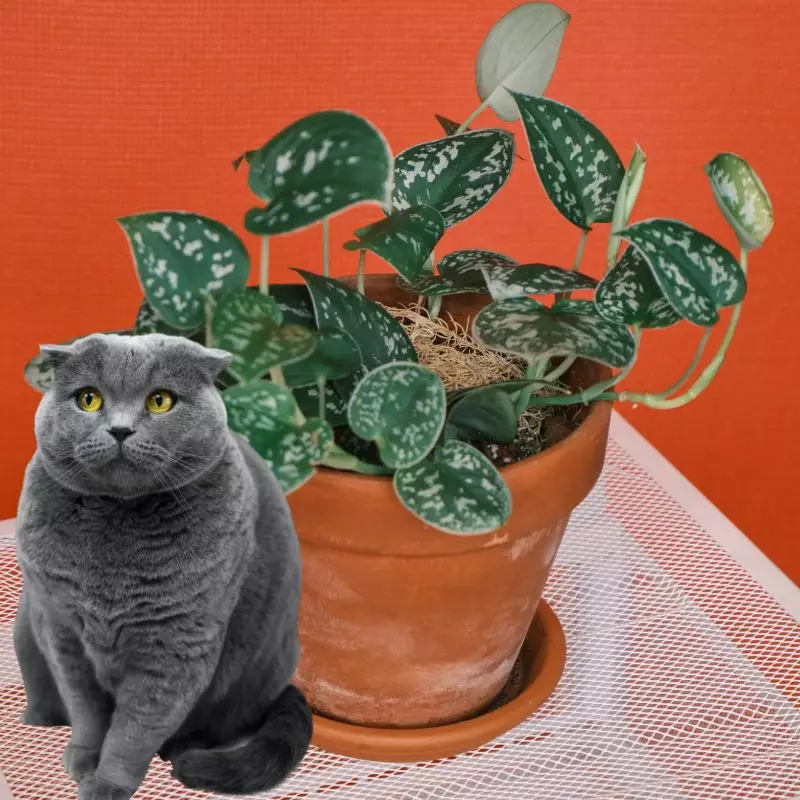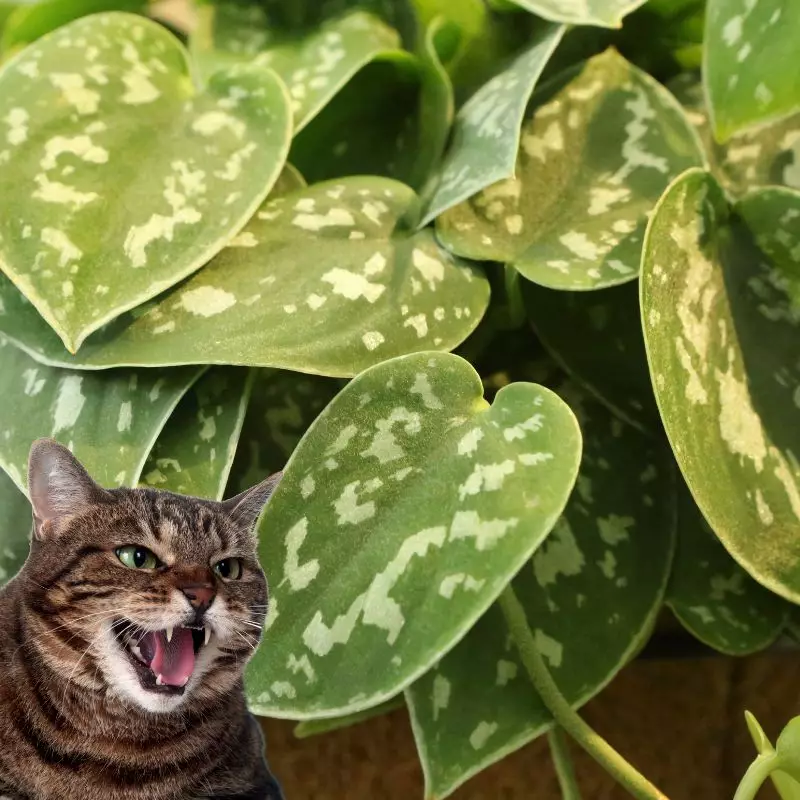Satin Pothos does indeed pose a toxic risk to cats. This plant is frequently found as an ornamental element in many homes, rendering indoor cats particularly susceptible to its harmful effects. Consumption of any part of the Satin Pothos plant—whether it be the root, stem, or leaves—can lead to severe adverse reactions in cats due to the presence of raphides, needle-like structures laced throughout the plant. When ingested, these raphides can cause intense burning sensations in the mouth and may potentially lead to significant throat swelling, causing suffocation. Furthermore, if the oxalate crystals from the plant are digested, they can solidify within a cat’s kidneys, proving fatal.
This article has been meticulously crafted in collaboration with a team of experienced Doctors of Veterinary Medicine (DVMs). Their valuable insights and knowledge have enriched the content, ensuring the provision of accurate, reliable, and the most up-to-date information about the risks that various plants, including Satin Pothos, can pose to cats. Additionally, extensive research has been conducted, utilizing high-authority sources such as ASPCA and PetMD to validate the information on every plant discussed, guaranteeing our readers receive only the most trustworthy and verified data on this crucial subject.
Clinical Signs of Satin Pothos Poisoning in Cats

Upon contact or ingestion of the Satin Pothos plant, cats may exhibit several distressing symptoms. These symptoms are largely due to the presence of raphides and calcium oxalate crystals found in the plant. Here’s a closer look at the clinical signs and the underlying causes:
- Intense Burning Sensation: The raphides within the plant can cause a profound burning sensation in the cat’s mouth, throat, lips, and tongue. These needle-like structures penetrate sensitive oral tissues, causing immediate irritation.
- Excessive Drooling: As a reflexive response to the burning sensation and to try and rid the mouth of the plant particles, the cat might drool profusely.
- Choking and Throat Swelling: Swelling is the body’s inflammatory response to injury. In the case of Satin Pothos ingestion, the irritation and injury to the throat from raphides can lead to significant swelling, which in turn, can cause choking.
- Difficulty Swallowing (Dysphagia): Due to the swelling and irritation of the throat, the cat might struggle to swallow, leading to dysphagia.
If a cat ingests larger quantities of the plant, more severe symptoms may emerge:
- Severe Gastrointestinal Distress: The ingested plant material can irritate the lining of the stomach and intestines, leading to gastrointestinal symptoms like vomiting, diarrhea, and abdominal pain.
- Breathing Difficulties (Dyspnea): Throat swelling can progress, restricting the airway and causing the cat to take shallow, rapid breaths or experience pronounced breathing difficulties.
- Liver and Kidney Damage: While severe cases of calcium oxalate poisoning can sometimes be treated, prolonged exposure or consumption of large amounts can lead to irreversible damage to the liver and kidneys, as these organs work overtime trying to process and expel the toxic components.
It’s imperative to seek immediate veterinary attention if a cat exhibits any of these symptoms after being in contact with the Satin Pothos plant.
First Aid and Treatment of Satin Pothos Poisoning in Cats

Although there is no known antidote for satin pothos poisoning in cats, prompt medical attention can save the cat’s life. Treatment before the kidney organs shut down is crucial to a good prognosis. The veterinarian may give the cat a prescription to make him vomit or give him an activated charcoal solution to bind with the deadly plant chemical and pass it out of his body in feces.
Intravenous fluids will be started as soon as the veterinarian believes the satin pothos toxin has reached the cat’s bloodstream and needs to be flushed out through the urine. Fluids may be given to your cat if he or she has been vomiting or has had severe diarrhea. Because satin pothos can irritate the throat, Kapectolin may be used to coat the inside of the throat and stomach.
Recovery from Satin Pothos Poisoning in Cats

The prognosis for cats with satin pothos poisoning is uncertain and highly dependent on the severity of the toxin. Cats who obtain emergency veterinary care have a better chance of survival than those who let the raphides reach their kidneys.
Prevention of Satin Pothos Poisoning in Cats
Remove all domestic plants and outdoor potted plants from the immediate area to avoid future satin pothos poisoning.
If you love plants but have cats at home, check out these lists:





